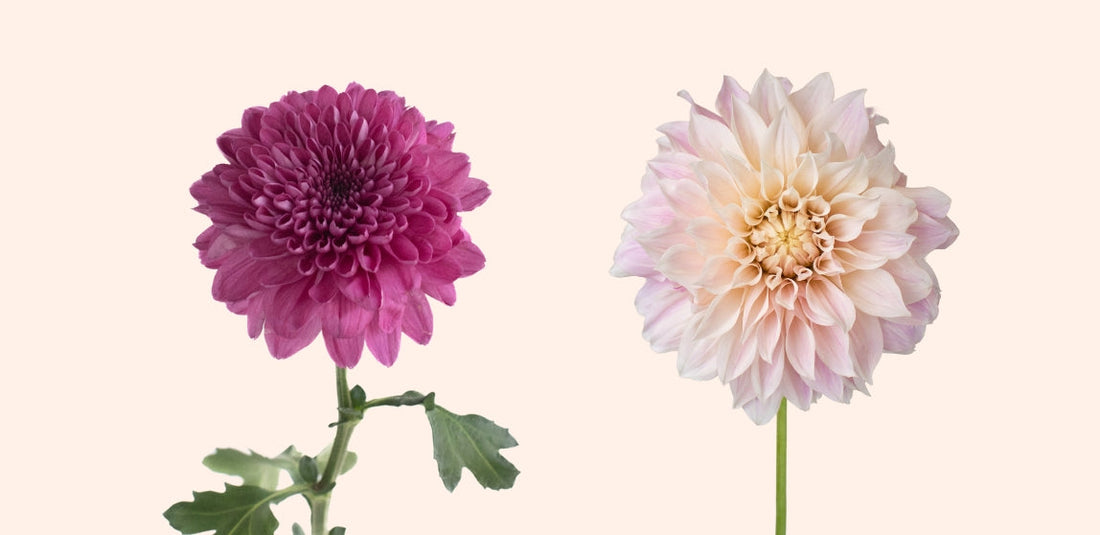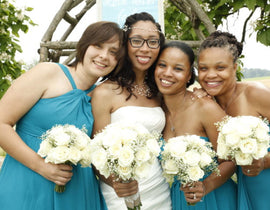Bahlias vs. Dahlias: A Comparative Guide to These Stunning Flowers

When it comes to fresh cut flowers that bring vibrance and character to any arrangement, Bahlias and Dahlias are often the stars of the show. Though their names are strikingly similar, these two flowers offer distinct features that can suit different tastes and needs. Whether you're arranging a bouquet for a special occasion or simply brightening up your living space, understanding the differences between Bahlias and Dahlias will help you make an informed choice.
Understanding Bahlias and Dahlias
Bahlias:

- Petals: Bahlias typically have delicate, soft petals with an almost velvety texture.
- Colors: They are available in a wide range of colors, including pastel shades like pink and lavender, as well as more vibrant hues like red and orange.
- Shape: The blooms are usually round and full, giving an elegant and gentle appearance.
- Vase Life: Bahlias generally last around 5-7 days when cut and placed in a vase. To maximize their lifespan, it's essential to change the water regularly and trim the stems every couple of days.
- Fragrance: Bahlias are known for their subtle, sweet fragrance, which makes them an excellent choice for indoor arrangements where a light scent is desired.
Dahlias:

- Petals: Dahlias boast a more structured petal arrangement, often forming intricate patterns that can add a dramatic flair to any bouquet. Some varieties even come with a little shimmer/glitter, making these flowers look even more luxurious!
- Colors: While Dahlias also come in a variety of colors, they are particularly noted for their deep, rich tones such as burgundy, purple, and gold.
- Shape: The blooms vary significantly in size and shape, from small pompons to large dinner-plate varieties, allowing for greater diversity in floral designs.
- Vase Life: Dahlias tend to have a slightly shorter vase life compared to Bahlias, generally lasting around 4-6 days. Regular maintenance such as changing the water and cutting the stems is crucial.
- Fragrance: Unlike Bahlias, Dahlias are not particularly known for their fragrance. They are chosen more for their visual impact than their scent.
Key Factors to Consider
Color and Visual Impact:
- If you want a flower that offers a gentle touch with a variety of color options, Bahlias are a fantastic choice. Their soft petals and pastel colors can create a serene and delicate arrangement.
- For those aiming for a bolder, more dramatic look, Dahlias are the way to go. Their structured petals and rich colors make a strong statement in any floral display.
Longevity and Care:
- Bahlias tend to last a bit longer in a vase, making them a better option if you need your arrangement to stay fresh throughout a week.
- Dahlias require a bit more attention to keep them looking their best but offer unparalleled variety in terms of bloom shapes and sizes.
Fragrance:
- If scent is an important factor for you, Bahlias offer a subtle sweetness that can lightly perfume a room without being overpowering.
- Dahlias, while visually stunning, don't contribute much to the fragrance of an arrangement, focusing more on visual appeal.
Recommendations
Choosing between Bahlias and Dahlias comes down to what you prioritize in your floral arrangements. If you value a longer-lasting flower with a gentle fragrance and a soft, elegant appearance, Bahlias are your best bet. On the other hand, if you're looking for a flower that offers a wide variety of shapes and sizes with bold colors that make a statement, Dahlias will be more suited to your needs.
Ultimately, both Bahlias and Dahlias have their unique charms and can be excellent additions to any bouquet. Consider mixing them to create a dynamic, balanced arrangement that benefits from the strengths of both flowers.
Ready to explore these stunning flowers further? Book a consultation with one of our floral experts today to find the perfect blend of Bahlias and Dahlias for your next arrangement!








